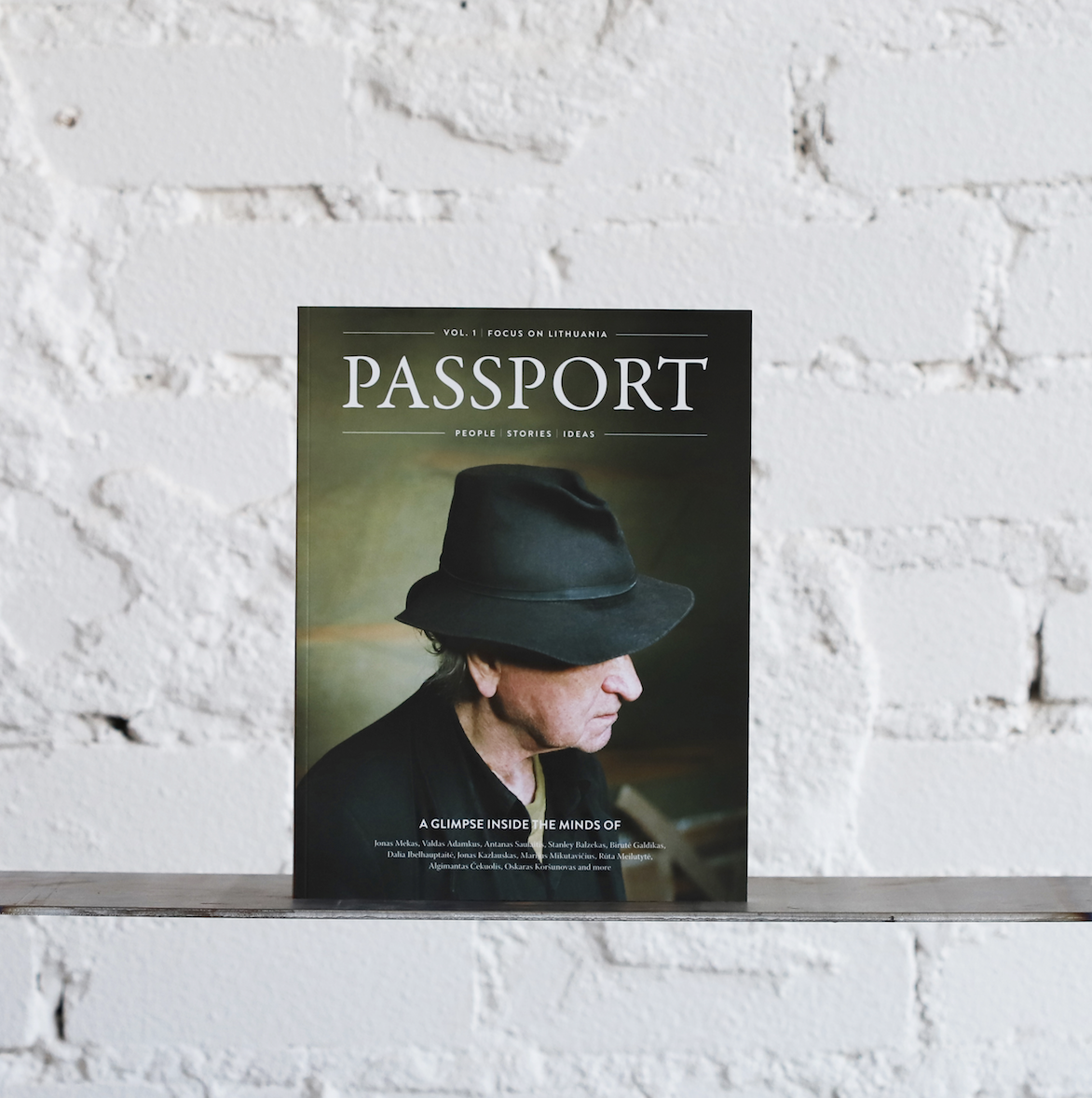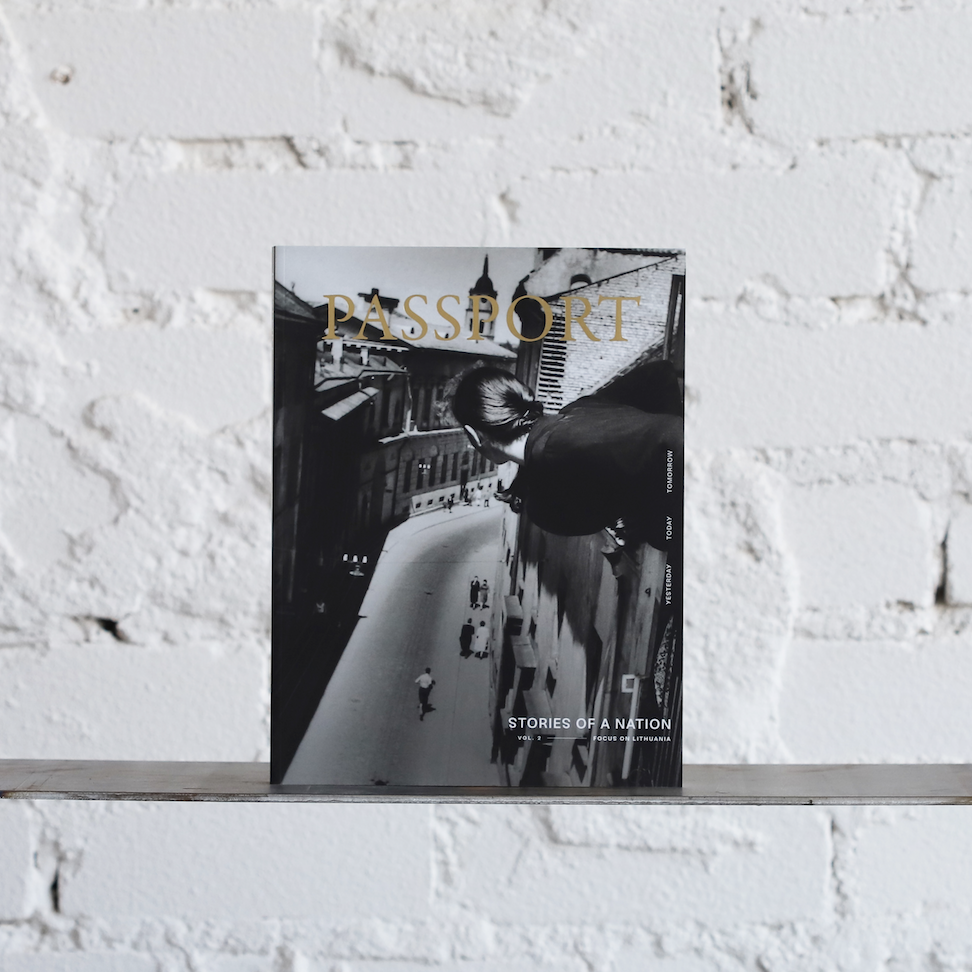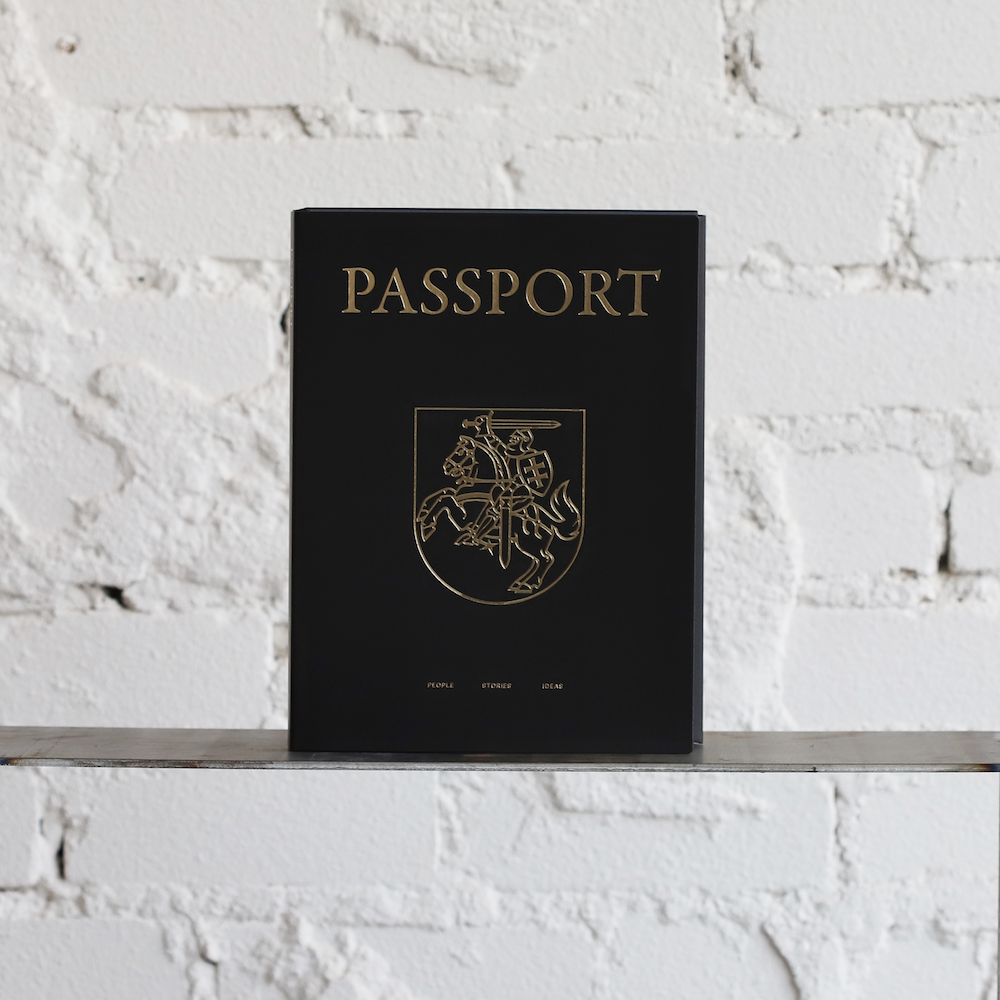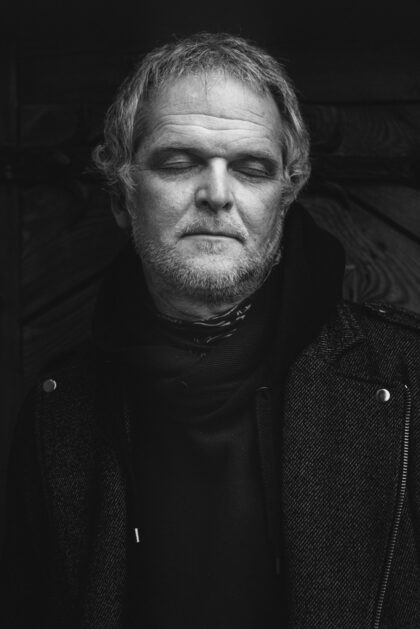Art Between the Lines

Photo credits: Tomas Adomavičius
With the current trend to “go digital,” we were often asked, “Why are you still publishing on paper?” We’ve turned this question over to experts who live and breathe paper every day, professionals in the field of publishing and book design. Inside the “Žinių Radijas” (News Radio) studio, Tomas Mrazauskas, Sigutė Chlebinskaitė, Kamilė Kalibataitė, and Sigita Pūkienė share their thoughts about a craft that goes unnoticed by many:
PANELISTS:
Sigutė Chlebinskaitė: book designer
Tomas Mrazauskas: book designer
Kamilė Kalibataitė: printing house“Petro ofsetas” business development and marketing director
Sigita Pūkienė: the director of the “Aukso žuvys” publishing house
The art of book design is a complex one. What factors need to be considered?
Kamilė Kalibataitė: I think this is a broad topic, because it includes both the external and internal design elements. Only when the publication’s format, cover, text, illustrations, and layout come together in harmony can we begin to talk about the art of book design.
Sigita Pūkienė: As a book is a physical object, the first impression will always be a visual one. Everything – font, design, illustrations, paper, binding, cover – has to convey a unified message to the reader. In my opinion, the artistic quality of a book is dependent upon the fusion of all the aforementioned elements into one object, an object from which one can take pleasure and that is worthy of admiration.
Tomas Mrazauskas: But we live in a world of sensations. A book isn’t just a physical, visual thing. By touching it, taking it in our hands, and opening it, we experience a flood of sensual impressions that are the expression of a bookmaker’s craft. When he chooses the font, paper, and binding to give a book form; he decides not only what his audience will see, but also what they will perceive. Yes, while reading our eyes scan the text, but do we actually see the words? We read unconsciously, so it’s more the experience and perception of form.
Sigutė Chlebinskaitė: It’s commonly understood that anything to which we affix the word “art” will be considered more sublime, more “real.” It engenders the desire to stop and consider the object, to return to it, and to end up under its spell.

I’ve noticed that a person who wants to boast about some publication or other will often describe it as a “work of art,” but I doubt whether this nomenclature is correct.
Sigutė Chlebinskaitė
One shouldn’t forget that even in the world of books fashions change, and the material or binding method used to make a book might be considered in vogue and therefore be used without any consideration of the book’s content or its merit, just because it achieves a certain desired “effect” through its novelty.
Is the printed book still relevant in this digital age?
Tomas: In the middle of the 20th century, there was talk that the radio would render the book obsolete. Ostensibly, this was because the radio made it easier and faster for people to exchange information. And now the current debate about whether the digital will usurp the print has been raging since the 80s, which saw the arrival of desktop publishing. It’s already been 30 years since then, and nothing has happened!
Kamilė: I completely agree. Many new contrivances on the market have tried to usurp the book, including the radio, the television, and the Internet, but not one of them has succeeded in taking the book from its readers’ hands. Nor do I think that anything of the sort will happen in the near future.
Tomas: Digital technology is an unavoidable aspect of the modern paper book because manuscripts are set into type using digital fonts and then printed and bound using computer-controlled machines. However, the book itself is a technology and its content is a sort of technology, too. It’s quite a unique technology, because while instruments or other gadgets are required to enjoy music or film, a book works autonomously. Yes, I’ll concede that in the dark one needs to turn on a light, but that’s the only restriction. For this reason a paper book is somewhat more convenient when you compare it to a digital one.
What is the significance of a book’s form, and how has this changed over time?
Kamilė: The handwritten book, and even one pressed mechanically in the 15th century, was custom-bound and decorated according to the means and status of the client.
Sigita: That’s right, whereas these days books are mass-produced, so the only choice in a bookstore is between hardback and paperback.
Tomas: Yes, but at least there are different types of printed books: a paper book can be small and suitable for carrying with you, another might be large and therefore find itself kept on a shelf, and yet another might be kept on a sofa or coffee-table. On an e-reader all books are the same size and weight, even on the most brilliantly advanced e-reader.

Also, one of the most obvious changes to modern-day bookmaking is linked to ecological studies.
Tomas Mrazauskas
More and more recycled or uncoated paper is used, and laminate is shunned because plastic-coated paper can’t be recycled. Critics of this change argue that a book is meant to last and that it will never need to be recycled, but this is certainly not true. Just ask any librarian!
Do certain books have a particular “style”?
Sigutė: Book design styles are imbued with history; their publishing reflects the times and the philosophy and nationality of its press. On a smaller scale, a book can distinguish itself through a craftsman’s artful work, wherein one can trace the individual’s distinct mark and style. Brand style is another interesting factor; we recognize famous publishers not only by their logo and design, but also from their chosen repertoire of books.
Does any experimentation ever take place?
Kamilė: Functionality is important in a book, and this often outweighs experimentation or other book design novelties.
Sigita: I totally agree. The standard form of modern books belongs on the list of perfected world innovations. It’s simply easiest to read a book in its regular layout.
Kamilė: But it can’t be denied that experimentation with standard form exists. For example, I had the chance to see a massive cartographical atlas that required more than one person to open.
Tomas: I maintain that so long as it’s possible to open a book and read it, even if it takes four hands, there is no experiment. Expression and innovation are an aspect of any serious artist or craftsman.
Sigita: Experimentation draws attention to the book, creates interest. However, every change requires justification.
Sigutė: I’ve noticed that things currently called “experiments” were once commonplace. Common practices such as coloring the fore-edge or using watermarks are once again being used as playful novelties.
Does a book’s form have any impact on its content?
Kamilė: I think that the most important thing is consistency. A book’s design shouldn’t impede its communicative function.
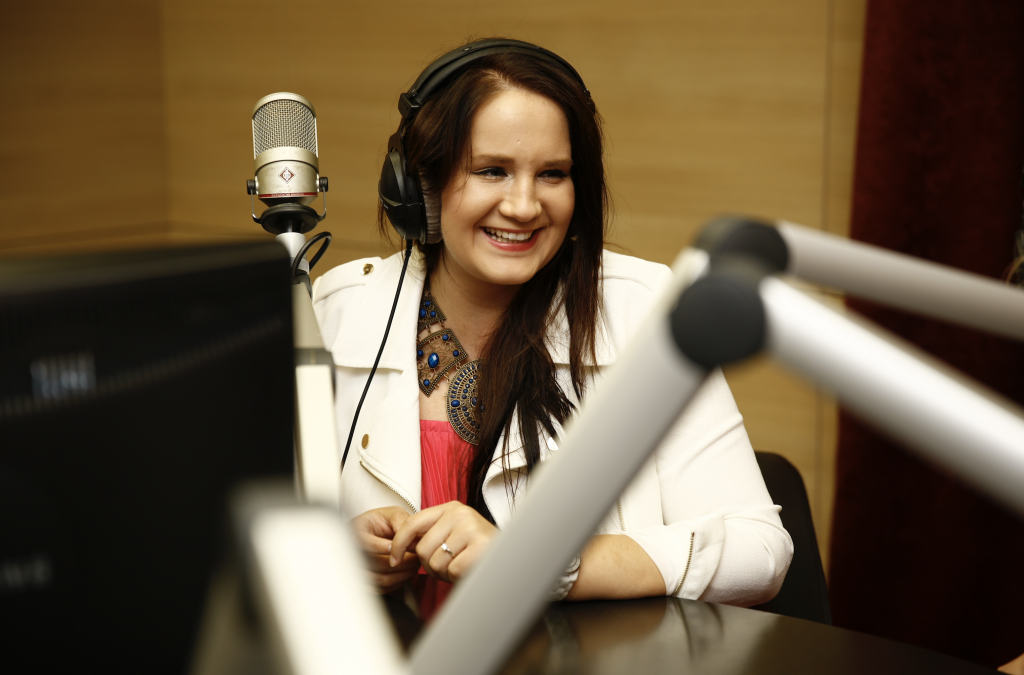
Unfortunately, I’ve seen poor design decisions that have disrupted the book’s content.
Kamilė Kalibataitė
Tomas: But when someone says that a good text was ruined by a bad design, it’s often an indication that the content is inferior.
Sigutė: I think that poor layout can affect one’s impression of a book as much as the absence of good design, but would such imperfections diminish the greatness of a text, say, by Anton Chekhov? No. So I conclude that poor book design does no grave injury to a work – it is but an unfortunate disservice.
What can design reveal about a book ?
Kamilė: Every detail in a book needs to serve a purpose; a book’s aesthetic needs to have some connection with the its content, and the designer needs to be able to justify every external and internal detail.
Tomas: Everything is contingent on the previous experiences of the designer, publisher, or reader; their background knowledge and ability to discern artistic details changes their perspectives.
What decisions need to be made regarding paper?
Sigita: Publishers often choose paper depending on the genre or nature of the publication: fiction is usually printed on off-white paper, whereas artwork is printed on white, glossy, coated paper. There are many types of paper, and today buyers can find a vast selection. Speaking strictly about design, the paper’s main function is aesthetic; it needs to reflect or fulfill a book’s vision.
Tomas: It’s true that there are more options than ever before. You can choose not only by color, texture or surface type, but also by composition or manufacturing location. In the beginning of the process I look for coherency (taking into account history, location, and composition), and then I adapt the choice according to the book’s content (if a neutral tone is necessary for colored illustrations) or technical requirements (if a thinner paper is necessary for certain gluing or folding machines). For me, the two most interesting decisions when designing a book are choosing the paper and the typeface.
Kamilė: However, we often have to consider the available finances and not just the desired paper type.
Sigutė: It’s true. The spectrum of paper is infinite, whereas the financial resources of the client are limited. In the publishing world, you’re chosen not to just produce a book, but also to make it fit the estimated budget. The choice of paper is always a compromise. Sometimes I joke with my colleagues that book designers don’t go into clothing shops because for them browsing a paper catalogue—with its endless spectrum of colors, details on prices, thickness, coarseness, etc.–is enough. From paper we create clothing for a book.
These days, can paper still impress a person?
Kamilė: Paper really can please or impress an individual, although admittedly it happens less and less. Decorative paper is the most interesting: metal leaf details, paper mixed with dried flowers, or even paper spun from real gold, cotton, silk, or other ornamental thread. Finances permitting, the publisher will use this type of paper stock for the endpapers or cover.
Sigutė: I find it very strange to see untearable or water-proof paper; sometimes the same material used to make construction apparel is also used in book publishing!
Tomas: But as they always say, “It’s not the material that’s important, it’s what you make of it.” Imagine a book of art has been printed on newsprint and, for example, with purple text. Sure, it’s always possible to impress and astound, but the other question is whether the decision “fits.” That is to say, are the publication and its form complementary?
Is a book conceived in its entirety, or does it evolve during production?
Sigita: The book creation process can be long, usually taking at least one year, and the book certainly changes during this time. Sometimes a design element is proposed at the very beginning and everyone agrees, or sometimes the text itself clearly dictates the design, but usually one has to mull over the design for a long time. The big picture needs to be considered.
Tomas: I like active authors who aren’t too work-shy to muse a bit about design. Their suggestions frequently provoke some interesting decisions, although the authors need to keep in mind that a professional designer has more experience within the field, so he or she should make the final decision. When I work on a book, I always go through the following three steps: research, artistic design, and technical production. These three processes require quite different mindsets, knowledge, and experience.
Kamilė: Even an avid reader can’t fathom the length and complexity of book creation and production.
What role does the publisher play in book design?
Kamilė: They are important because their word is decisive.
Sigita: At bigger publishing houses there is the position of head designer, and although the senior staff must approve the final product, the head designer makes the major design decisions along the way.

In a small publishing house, the publisher actively participates in every stage, including design.
Sigita Pūkienė
How do publishers decide what to publish?
Sigita: “To publish or not to publish?” The eternal question! The main criterion for selection is whether the book fits the publisher’s profile.
Kamilė: That’s exactly it. What’s published depends on the nature of the publisher. However, some weight is given to which books are presently in vogue and which subjects are popular with foreign audiences.
Sigita: For example, today people worldwide are quite enamored with books penned by television culinary personalities.
How common are mistakes during production?
Kamilė: Such situations occur when there is a lack of communication between the publisher, designer, and the press. Small errors turn up almost every day, but usually things turn out well.
Tomas: I try to be flexible in my expectations when printing. You can imagine how many times something goes wrong while pouring paint, but such things give life to the creation.
How is the art of book design viewed in Lithuania as opposed to abroad?
Tomas: What annoys me the most is the apathy of Lithuanian publishers and their indifference to form; in general, I think most people in this part of the world are indifferent to form. In the Lithuanian context, design is usually understood as decoration. Constructive design is lauded and accepted, whereas the search for artistic form is usually treated as something negative or called an “experiment.” The post-totalitarian fear of standing out from the crowd still reigns supreme here.
Kamilė: Of course, Northern Europe, Asia, and South America are famous for their amazingly old bookmaking traditions, which is why so much attention is paid to them. However, it’s impossible to categorically state that book design didn’t or doesn’t exist in Lithuania. Perhaps Lithuanian publishers have smaller budgets and a small market, making them less likely to experiment with aesthetics, but despite this a number of books produced in Lithuania enjoy a position amongst the world’s most beautiful publications.


